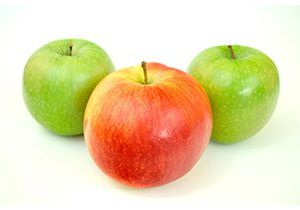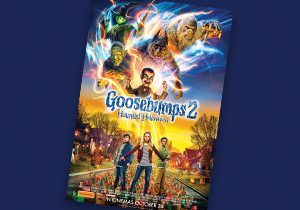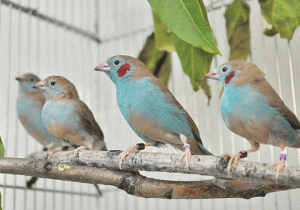
Pets facts: Primary resource
Consider and learn more about the kinds of pets we keep
This primary resource gives children the chance to consider and learn more about the pets they keep. How many times a minute can dogs pant? How old did the oldest koi carp live to be? What is a baby rabbit called?
Pupils will learn cool and unusual things about the different animals that humans keep as pets, and some of the behaviours that they are used to seeing (such as why dogs prefer to drink out of the toilet than their bowls!) in our National Geographic Kids’ Science primary resource sheet.
The teaching resource can be used in study group tasks for discussion about what makes a good pet and how our pets are different from us. It could be used as a printed handout for each pupil to review and annotate, or for display on the interactive whiteboard for class discussion.
Activity: Ask children to use the facts provided and their own research to write a pets fact sheet of their own. Pupils could choose one of the animals mentioned and make poster or leaflet about that animal and what makes it a good pet. They could choose one of the facts to research further and write a short report on (i.e. using the fact ‘In Europe, ferrets have been used to run television cables through pipes’, pupils could write a report on when and how these ferrets were used, looking at the features and adaptations of ferrets that made them suitable for the task).
N.B. The following information for mapping the resource documents to the school curriculum is specifically tailored to the English National Curriculum and Scottish Curriculum for Excellence. We are currently working to bring specifically tailored curriculum resource links for our other territories; including South Africa, Australia and New Zealand. If you have any queries about our upcoming curriculum resource links, please email: schools@ngkids.co.uk
This Animals primary resource assists with teaching the following Key Stage 1 Science (Year 1) objectives from the National Curriculum:
Pupils should be taught to:
- identify and name a variety of common animals including fish, amphibians, reptiles, birds and mammals
- identify and name a variety of common animals that are carnivores, herbivores and omnivores
- describe and compare the structure of a variety of common animals (fish, amphibians, reptiles, birds and mammals, including pets)
Pupils might work scientifically by: using their observations to compare and contrast animals at first hand or through videos and photographs, describing how they identify and group them; grouping animals according to what they eat; and using their senses to compare different textures, sounds and smells.
National Curriculum Key Stage 1 Science (Year 2) objective:
Pupils should be introduced to the idea that all living things have certain characteristics that are essential for keeping them alive and healthy. They should raise and answer questions that help them to become familiar with the life processes that are common to all living things.
Pupils should be taught to:
- notice that animals, including humans, have offspring which grow into adults
- find out about and describe the basic needs of animals, including humans, for survival (water, food and air)
Pupils should be introduced to the basic needs of animals for survival, as well as the importance of exercise and nutrition for humans. They should also be introduced to the processes of reproduction and growth in animals. The focus at this stage should be on questions that help pupils to recognise growth; they should not be expected to understand how reproduction occurs.
National Curriculum Lower Key Stage 2 Science (Year 3) objective:
Pupils should be taught to:
- identify that animals, including humans, need the right types and amount of nutrition, and that they cannot make their own food; they get nutrition from what they eat
- Compare and contrast the diets of different animals (including their pets) and decide ways of grouping them according to what they eat. They might research different food groups and how they keep us healthy and design meals based on what they find out.
National Curriculum Lower Key Stage 2 Science (Year 4) objective:
Pupils should be taught to:
- recognise that living things can be grouped in a variety of ways
- explore and use classification keys to help group, identify and name a variety of living things in their local and wider environment
National Curriculum Upper Key Stage 2 Science (Year 5) objective:
Pupils should be taught to:
- describe the differences in the life cycles of a mammal, an amphibian, an insect and a bird
This Animals primary resource assists with teaching the following Sciences First level objectives from the Scottish Curriculum for Excellence:
- By comparing generations of families of humans, plants and animals, I can begin to understand how characteristics are inherited.
Scottish Curriculum for Excellence Second level Sciences objectives:
- I can identify and classify examples of living things, past and present, to help me appreciate their diversity. I can relate physical and behavioural characteristics to their survival or extinction.
- By investigating the lifecycles of plants and animals, I can recognise the different stages of their development
- By exploring the characteristics offspring inherit when living things reproduce, I can distinguish between inherited and non- inherited characteristics.
Scottish Curriculum for Excellence Fourth level Sciences objectives:
- I understand how animal and plant species depend on each other and how living things are adapted for survival. I can predict the impact of population growth and natural hazards on biodiversity.
Download primary resource
More Like

Your guide to plastic-free snacking!

Goosebumps 2: Haunted Halloween!

SLIME









LEAVE A COMMENT
THANK YOU
Your comment will be checked and approved shortly.
WELL DONE,
YOUR COMMENT
HAS BEEN ADDED!
COMMENTS
CUSTOMIZE YOUR AVATAR